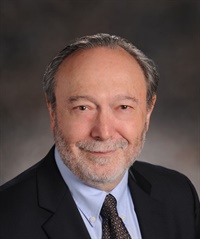
Join Dr. Stephen Porges, the developer of Polyvagal theory (PVT)—also known as the neuroscience of safety—as he offers a paradigm shift in autism intervention.
You’ll learn that the behaviours you frequently observe are the tip of the iceberg. That we must go below the waterline to reveal the most important treatment goal for all individuals: the neuroception of safety as evidenced by physiological state regulation. You’ll learn the best strategies for down-regulating threat and defensive reactions by shifting the individual’s state to that of calmness with feelings of safety leading to accessibility and spontaneous social engagement.
Dr. Porges will present new ways to conceptualize and write treatment goals that are respectful of the child’s (and parent’s) nervous systems, leading the way to improved communication, relational satisfaction, and joy. Autism treatment that includes an appreciation of the body, the physiology of parent and child.
Through research and an understanding of the science, this workshop presents cutting edge integration of neuroscience into autism support, providing new, emerging applications and offering hope and a new focus on the neuroscience of safety to autism treatment.
This online program is worth 1.75 hours CPD.
| File type | File name | Number of pages | |
|---|---|---|---|
| Manual - The Neuroscience of Safety (18.7 MB) | 49 Pages | Available after Purchase | |
| Text Document | Transcript (34 KB) | 30 Pages | Available after Purchase |
| Text Document | PA Educator Instructions (15.3 KB) | Available after Purchase | |
| Manual - The Neuroscience of Safety - French (18.7 MB) | 49 Pages | Available after Purchase | |
| Manual - The Neuroscience of Safety - Italian (18.7 MB) | 49 Pages | Available after Purchase |

Stephen W. Porges, PhD, is Distinguished University Scientist at Indiana University, where he is the founding director of the Traumatic Stress Research Consortium within the Kinsey Institute. He holds the position of Professor of Psychiatry at the University of North Carolina and Professor Emeritus at the University of Illinois at Chicago and the University of Maryland.
Dr. Porges served as president of both the Society for Psychophysiological Research and the Federation of Associations in Behavioral & Brain Sciences and is a former recipient of a National Institute of Mental Health Research Scientist Development Award. He has published more than 300 peer reviewed scientific papers across several disciplines including, anesthesiology, biomedical engineering, critical care medicine, ergonomics, exercise physiology, gerontology, neurology, neuroscience, obstetrics, pediatrics, psychiatry, psychology, psychometrics, space medicine, and substance abuse.
In 1994 Dr. Porges proposed the Polyvagal Theory, a theory that links the evolution of the mammalian autonomic nervous system to social behavior and emphasizes the importance of physiological state in the expression of behavioral problems and psychiatric disorders. The theory is leading to innovative treatments based on insights into the mechanisms mediating symptoms observed in several behavioral, psychiatric, and physical disorders.
He is the author of The Polyvagal Theory: Neurophysiological foundations of Emotions, Attachment, Communication, and Self-regulation (Norton, 2011), The Pocket Guide to the Polyvagal Theory: The Transformative Power of Feeling Safe (Norton, 2017) and co-editor of Clinical Applications of the Polyvagal Theory: The Emergence of Polyvagal-Informed Therapies (Norton, 2018).
Dr. Porges is also the creator of a music-based intervention, the Safe and Sound Protocol™, which currently is used by more than 1000 therapists to improve spontaneous social engagement, to reduce hearing sensitivities, and to improve language processing, state regulation, and spontaneous social engagement.
Content Disclosure:
This presentation will focus exclusively on The Polyvagal Theory on Supporting Children on the Autism Spectrum and will not include information about other similar or related theories.
Speaker Disclosure:
Financial: Stephen Porges is a Distinguished University Scientist at Indiana University; and a professor at the University of North Carolina. Dr. Porges has intellectual property rights, and receives royalties from Integrated Listening Systems (now Unyte). In addition, he holds patent rights licensed to NeuralSolution for the technology embedded in PhysioCam and in technologies embedded in products marketed by Unyte. He is an author for W. W. Norton and receives royalties. Dr. Porges receives a speaking honorarium from PESI, Inc.
Non-financial: Stephen Porges has no relevant non-financial relationship to disclose.
Satisfaction Guarantee
Your satisfaction is our goal and our guarantee. Concerns should be addressed to info@pesi.co.uk or call 01235847393.
Please wait ...